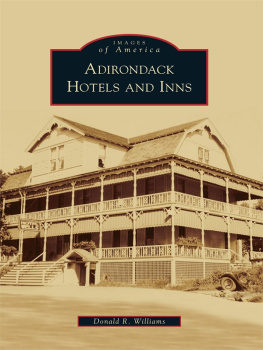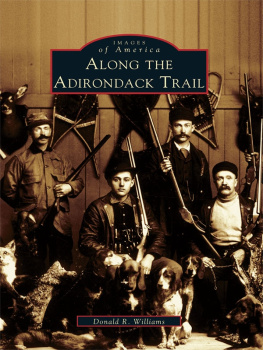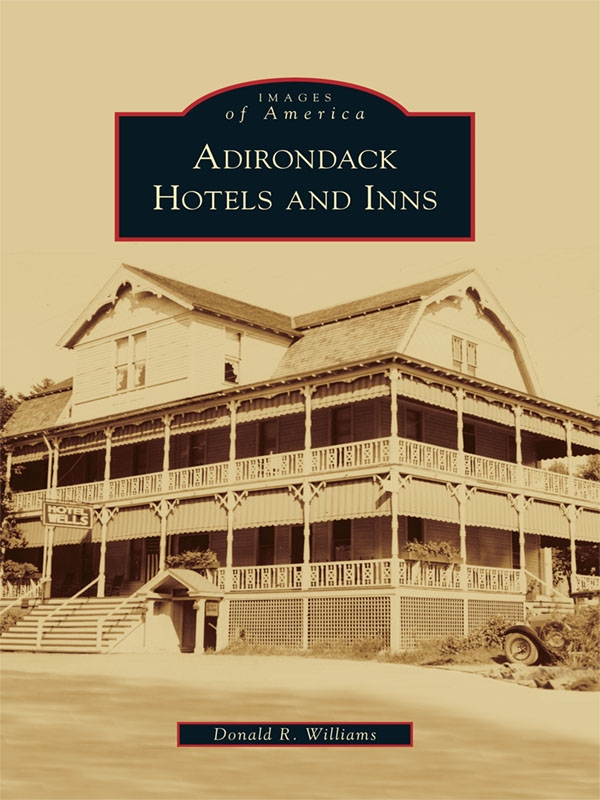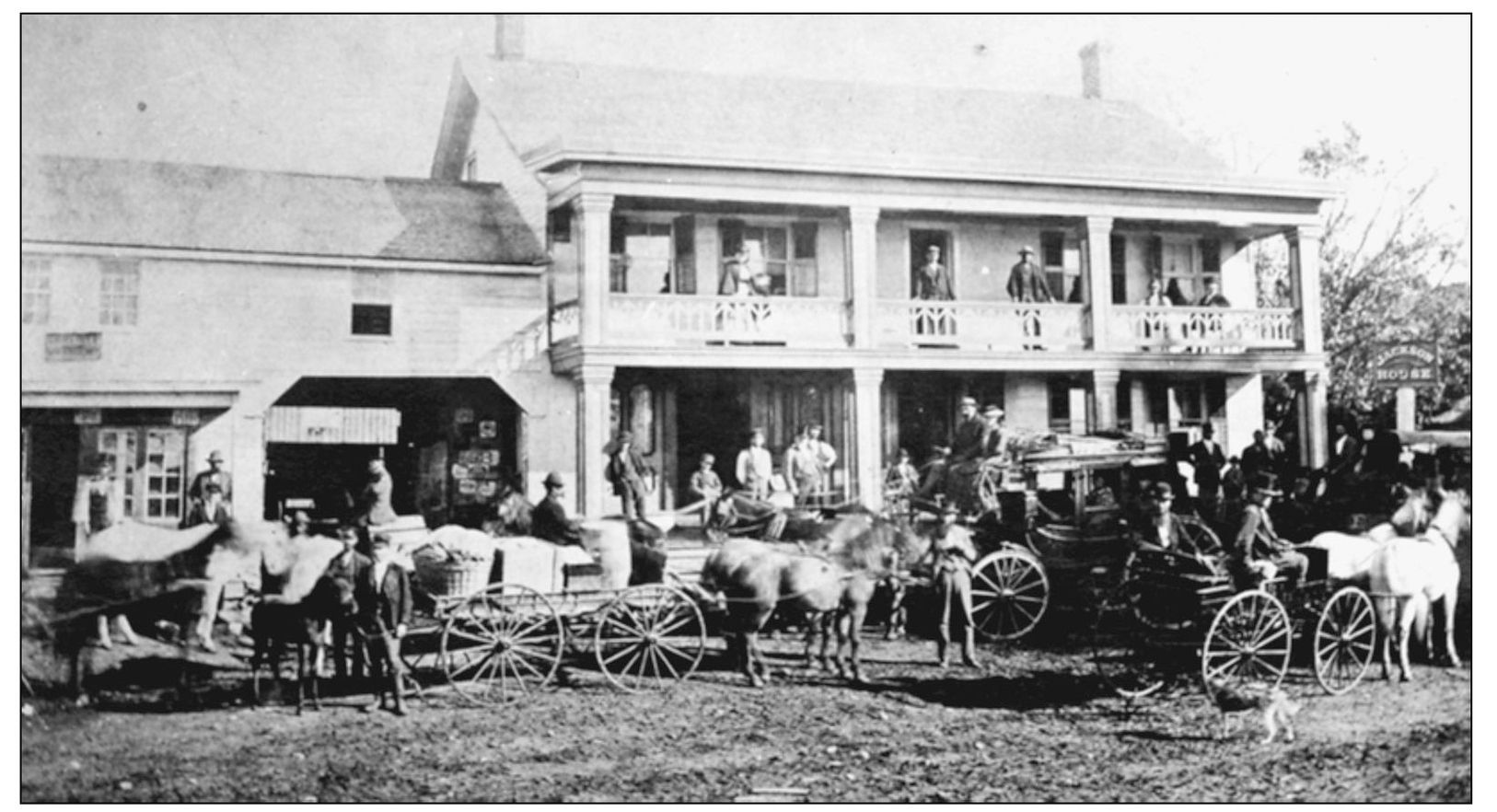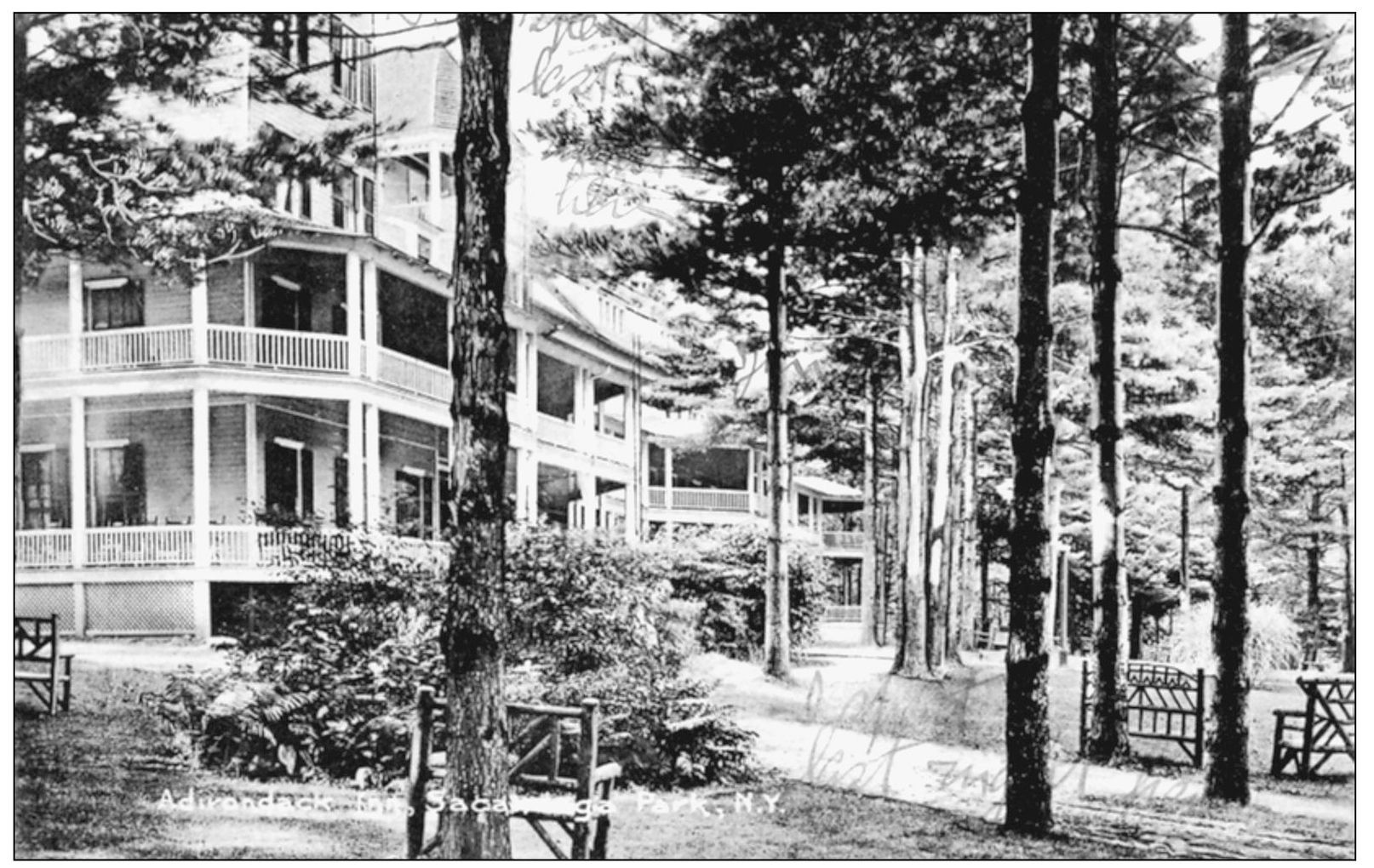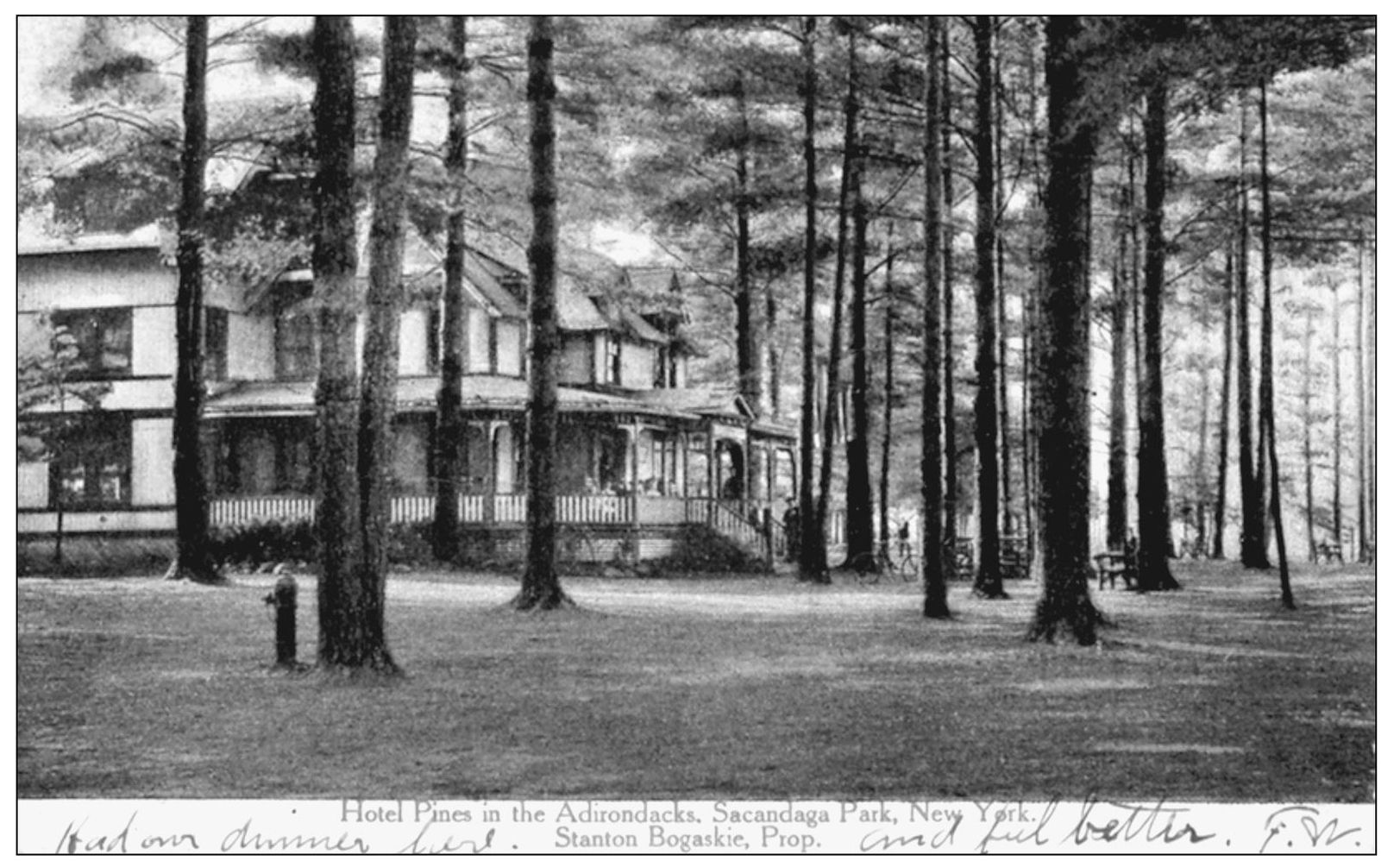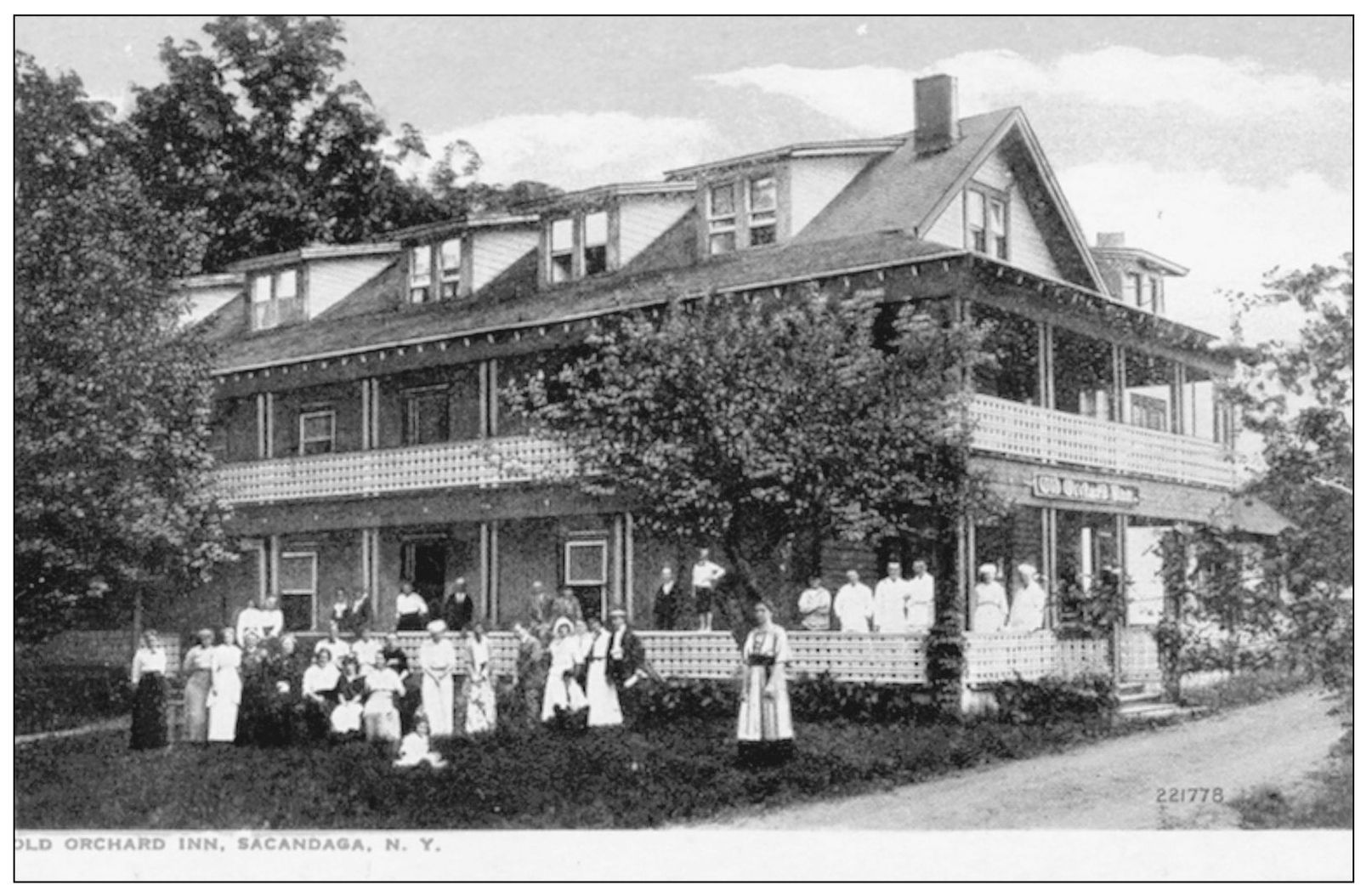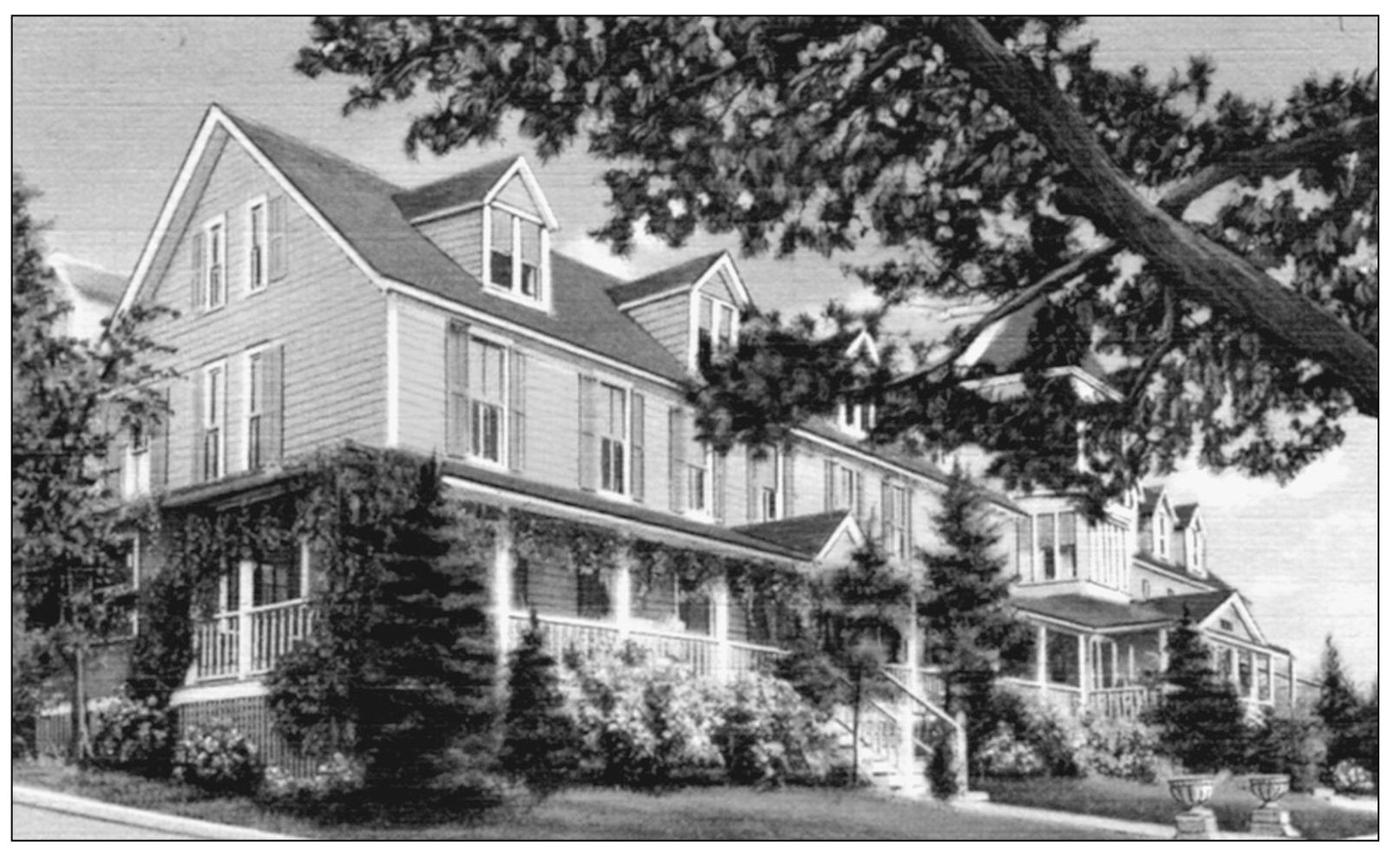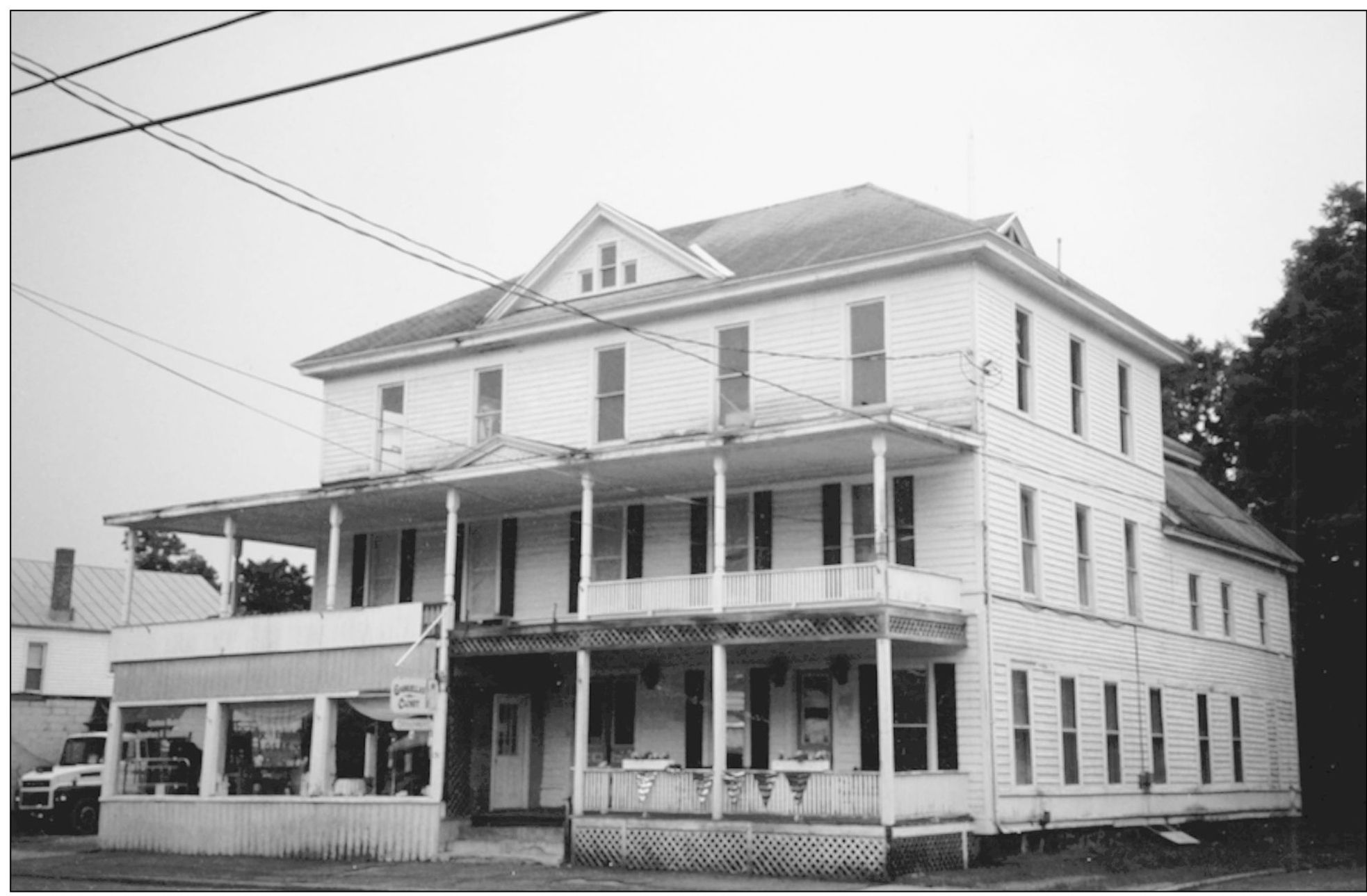One
ADIRONDACK TRAIL HOSTELRIES
The Jackson House at Mayfield, at the gateway of the Adirondack Trail, is the scene of those traveling in the Adirondacks before the automobile days. Stagecoaches, farm wagons, surreys, freight wagons, and other horse-drawn and ox-drawn vehicles made early use of the Adirondack Trail as it connected the developing settlements. Hotel keeping became a major industry on the trail to handle the influx of travelers who had to spend the night or stay for business or pleasure.
The Adirondack Inn, built in 1890 at Sacandaga Park, was advertised as the Adirondack-Gem of the North by the Fonda, Johnstown and Gloversville Railroad. In 1937, a 23-room addition brought it up to 160 guest rooms with everything modern and for comfort. It boasted easy access to the railroad, dancing every evening, a post office and a telegraph office in house, and the New York papers daily. Along with this, the inn offered beautiful and primitive scenery, rest, recreation and health in its 1895 brochure, Sacandaga Park . Concerts were held on the lawn of the Adirondack Inn and in an adjacent bandstand. The John Philip Sousa Band and E. W. Proutys Military Band and Orchestra of Boston brought top-quality music to the park. Dance bands performed in the ballroom at the Adirondack Inn, and an open-air pavilion offered free dancing on Saturday evenings.
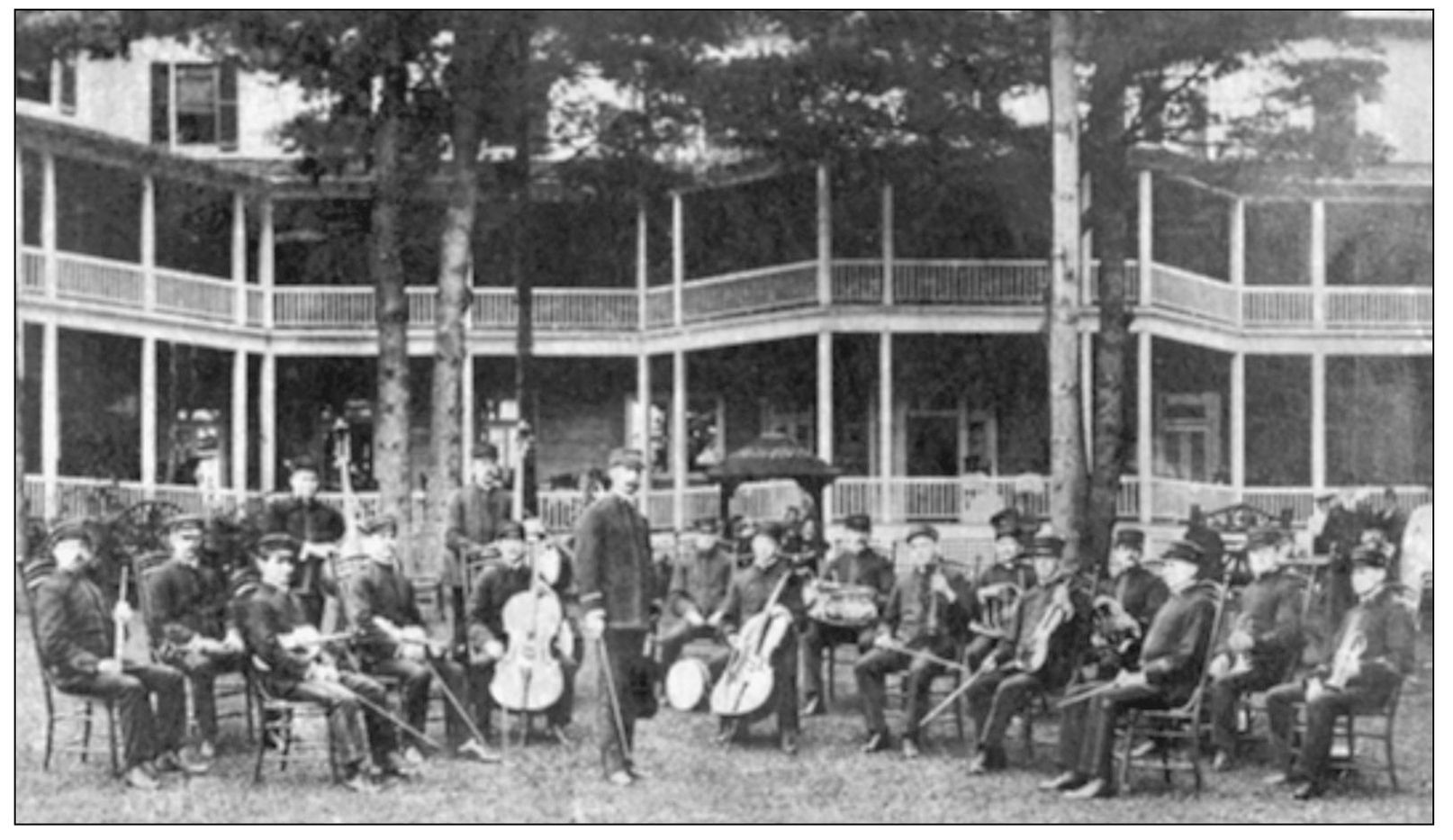
The Hotel Pines, on the banks of the Sacandaga River at Sacandaga Park, was only a five-minute walk from the railroad station. Many hotels were built on the rail lines to take advantage of the transportation and the advertising done by the railroad companies. The Pines restaurant offered a daily menu, complete with major entres and fancy desserts. In its bar and caf it carried all the popular brands of whiskey as well as beer on draught for 10 per glass. It was one of the few hotels that had its own skating rink. Stanton Bogaskie was the proprietor and announced it was opening by Memorial Day each year. Other hostelries in the park included the Osborne Inn, Log Cabin Inn, Corbett Cottage, and Allens Cottage.
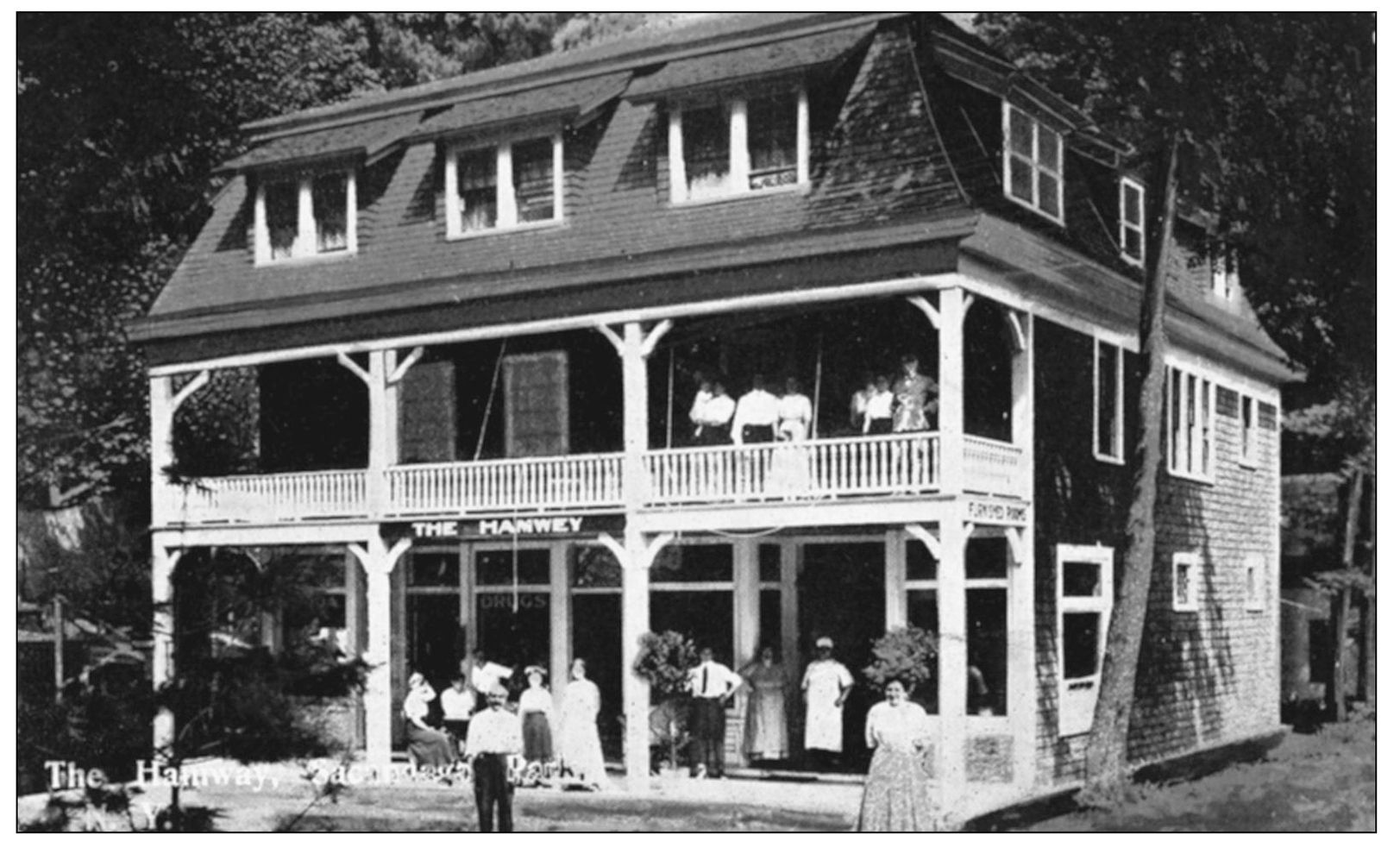
The Old Orchard Inn stood on the sharp corner and the southern exit from Sacandaga Park, conveniently situated on the border to the historic Sacandaga Park Golf Course. Opened on March 5, 1913, the three-story inn was under the proprietorship of C. H. Osborne, a well-known Adirondack hotel operator. The Old Orchard Inn was demolished in 1965, and only a vacant lot remains today.
The construction date of the St. James Hotel between Sacandaga Park and Northville is unknown, but the vehicle in the photograph, an early bus loaded with passengers going to the park, indicates that it was at the beginning of the 20th century. Some evidence exists that it was operating as a hotel before World War I.
High Rock Lodge owed its popularity to the Sacandaga Amusement Park, the Coney Island of the Adirondacks. Built on a hillside overlooking the park, it attracted hikers, tourists, parkgoers, and entertainers over its 50-year history. The lodge, operating as a farmhouse inn, was built in 1901 by James Hull for Reuben D. Buckingham. The large rock pictured here, located on the site, became a popular hiking destination for the thousands who came to enjoy the Sacandaga Park attractions. In 1940, Ashley and Mildred Dawes purchased the three-story, 54-room hostelry and operated it as a summer lodge and cottages, along with a restaurant. It burned on August 22, 1951. After the fire, Mildred continued the hostelry, converting her house on the property into a dining room and cocktail lounge. Lodging continued in the several cottages on the property.
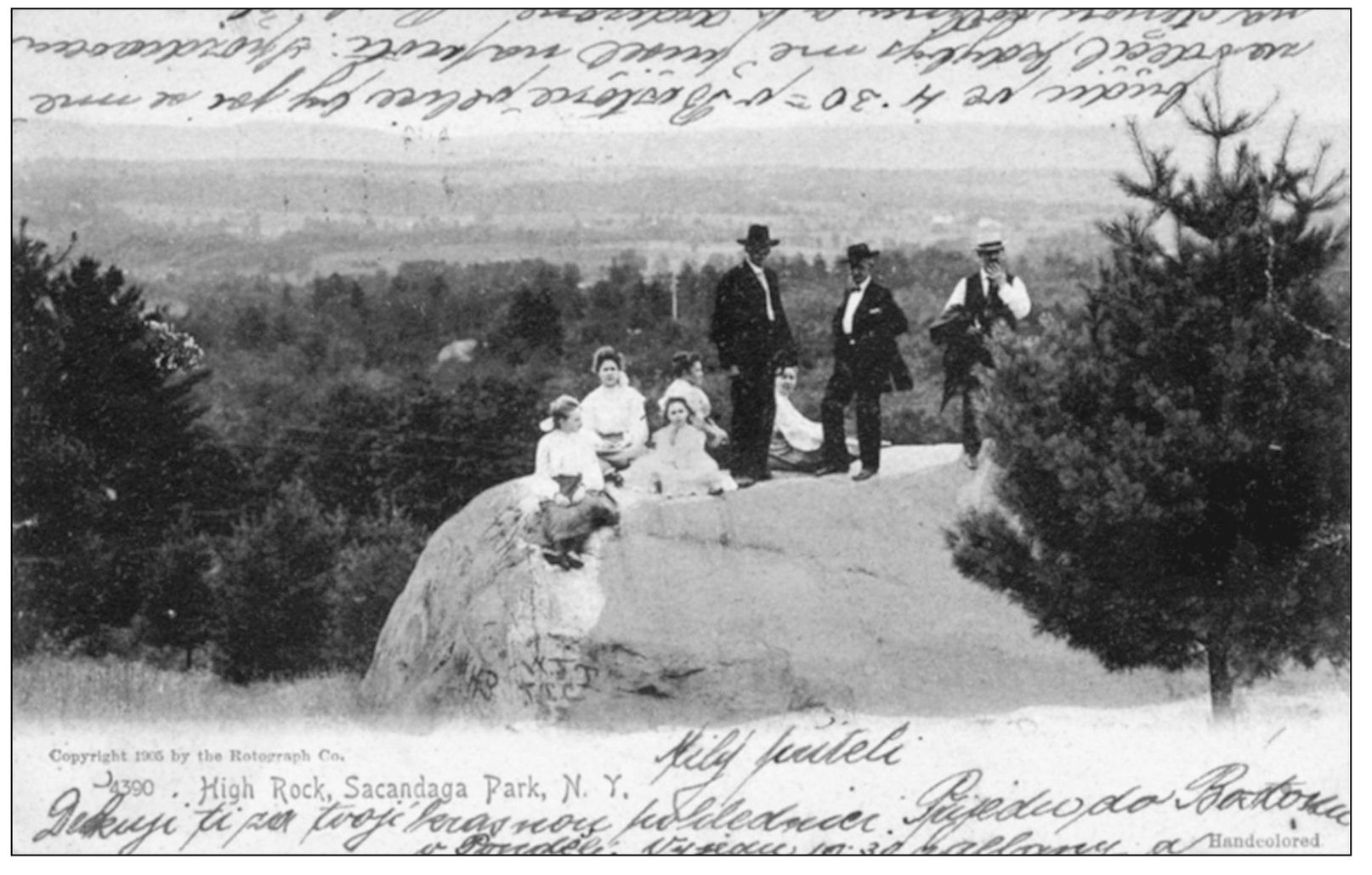
A New York State historic marker near the Northville Bridge on the Adirondack Trail, Route 30 marks the terminus of the railroad line that brought vacationers and others to the southern gateway of the Adirondacks. Once the Fonda, Johnstown and Gloversville Railroad (FJ&G) was connected to the New York Central Railroad at Fonda in 1870, the need of a spur to Northville was evident. The Northville and Gloversville Railroad Company was formed with $20,000 in bonds, along with a stock company of $200,000. The finances did not work, so the line was sold to the FJ&G. From 1875 to 1930, those who stayed in the southern Adirondack hostelries in Northville, Hope, Wells, Speculator, Lake Pleasant, Piseco, and other internal Adirondack places took the train to Northville and then, in the early years, boarded the stagecoaches and horse-drawn hacks and later took Model-T Ford taxis and autobuses to their destinations.
The Northville House, or Hotel Northville, was built in 1813 by Abraham Van Arnam for his daughter and her husband, James Lobdell. Abrahams brother, Jacob Van Arnam, later became the owner and converted the home into a hotel. A portion of the hotel was burned in a fire in 1898, and it was repaired. The 138-year-old hotel ceased operation in 1951 with Alfred Sawyer, who ran it for 10 years, as the last proprietor. Hiram Denton and Claude Lipe, proprietors of a small furniture store since 1947, purchased the large building for their growing furniture business. In 1960, Milton Groff, who had been associated with the business since 1949, became the owner of the firm. In 1999, the Northville House was purchased from James Groff by Pat and Kevin Richard, with the idea of restoring it to its former grandeur by its 200th birthday in 2013.

